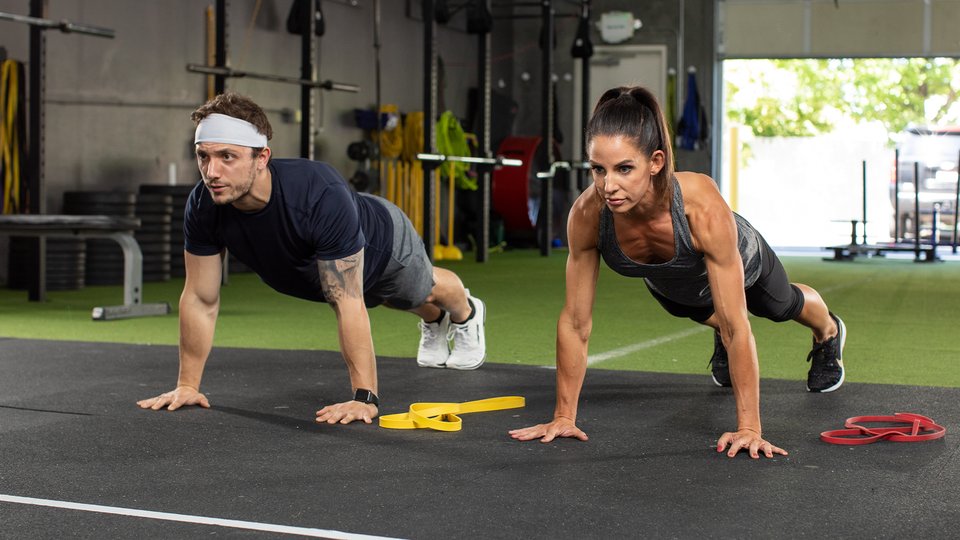Products You May Like
Special Ops Tactical Fitness | Patrol Officer Tactical Fitness | Firefighter Tactical Fitness | Pass Your PT Test | Pass the ACFT
The new Army Combat Fitness Test, or ACFT, is a total departure from the way military fitness has been measured and tested—and it’s got a lot of people feeling nervous.
Trust me: You can pass this test—but don’t count on it happening without smart, strategic training to help you crack the toughest events.
These are my training rules for a no-doubt passing score on ACFT test day. If you want to put them into action, check them out in my new program Combat Fit: 8-Week ACFT Training Plan, exclusively in BodyFit.
1. Build Your Base First
How do you prepare for an intense physical test—one that your professional livelihood depends on passing? Your first impulse may be to say, ”By practicing.” And sure, that’s part of it. But so is building up the fundamental skills and strengths that will help every one of those practice tests be more effective.
That’s why the Combat Fit program consists of two four-week phases:
- Combat Fit Phase 1: Base Training Phase
- Combat Fit Phase 2: Peak Training Phase
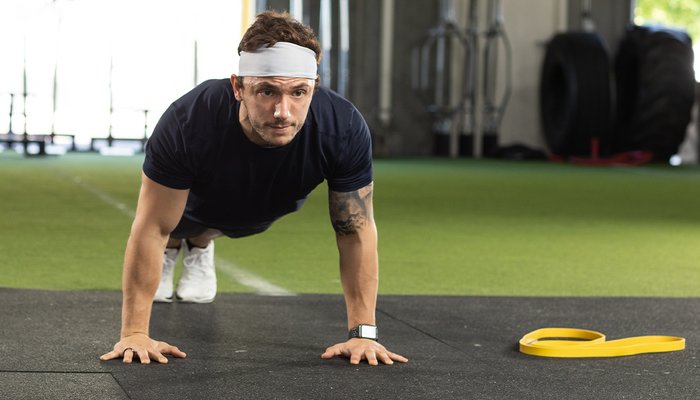
A solid base training phase doesn’t just ”get you in shape,” it familiarizes your body with the demands of consistent training, as well as ACFT-specific exercises. It also increases muscle-tissue and connective-tissue strength before those muscles and tissues get severely tested.
You can spend as little as four weeks in a phase like this, but ideally, you’ll spend more like 6-8 weeks. That’s why I recommend aspiring ACFT-takers plan out far enough ahead (if it’s an option) to perform Phase 1 twice.
Once you’ve got that base in place, you’re ready for a peaking phase.
2. Don’t Over Peak
For the ACFT, a peaking phase accomplishes two goals:
- Familiarizes your body with lifting heavier loads in order to increase motor unit recruitment and force output on test day.
- Increases your event-specific conditioning.
You may think all the lifting and cardio you’ve already done is enough to prepare you for the sprint-drag-carry medley. And it might be. However, no matter how conditioned or strong you are, you’ll do better—and feel better—if you trained for that specific event.
If you’re tempted to just make an ACFT peaking program like Phase 2 of Combat Fit your ”go-to” program from now on, don’t. Spending too much time at the highest level of intensity in a program will inevitably cause your performance to drop.
My advice: Peak for four weeks, or if necessary, repeat the fourth week one time for a total of five weeks. Then, give yourself 7-10 days off from doing the final workouts in Phase 2 before your ACFT testing day, so your body (and mind) will be full rested and ready to crush the test.
3. Don’t Lift Too Heavy, Too Fast
A nice thing about the ACFT is that there’s no secret about the performance standards you’ll need to meet. The information is out there right now, and if you want to know how your trap bar lift measures up, there are tools like Bodybuilding.com’s ACFT calculator to tell you.
However, given how easy it is to find out how much you’ll need to lift to pass, it can be easy to start lifting with that weight right away. For many people, this is going to be too much, too soon.
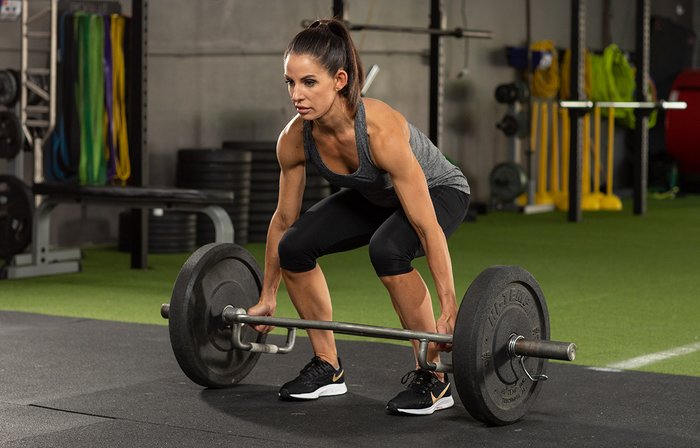
If you’re a beginner, or if it’s been a while since you’ve done any strength training, I recommend spending the first four weeks of your base training phase using a weight for each set that allows you to complete all indicated reps, with another 2-3 reps in the tank. And don’t be afraid to lighten the load on the second or third sets if needed!
4. Think Beyond Straight Sets and Supersets
Many gym workouts are built around either straight sets or supersets. There’s nothing wrong with either approach, or doing both together. But for the ACFT, I like to use two slightly different schemes: paired sets and trisets.
For example, here’s one of the paired sets from Week 3 of Combat Fit:
- Trap bar deadlift (or barbell hybrid deadlift): 3 sets, 8-10 reps (rest 1-2 min.)
- 1.5-rep push-up: 3 sets, max reps (rest 1-2 min.)
The only major difference between this and a superset is the extra rest time you get between movements. Sure, you may look at those two movements and think, ”They use different muscles. I don’t need to rest for 2 minutes.” But try it, and you’ll notice a difference in the second and third sets. And because each set is more intense in paired sets, you also still get a serious cardiorespiratory effect, which improves your conditioning levels.
By performing 2-3 exercises that work different muscle groups—say, glutes, hamstrings, and adductors—you’re constantly changing where your body must increase blood flow. This makes sure your heart and lungs are continually challenged, which helps you improve your conditioning while also increasing your strength and muscle in the targeted groups.
5. Train Both Generally and Specifically
For the ACFT, specific exercises are the exercises and drills that are part of the test itself, or very close. ”General” exercises are essentially conventional strength-training exercises.
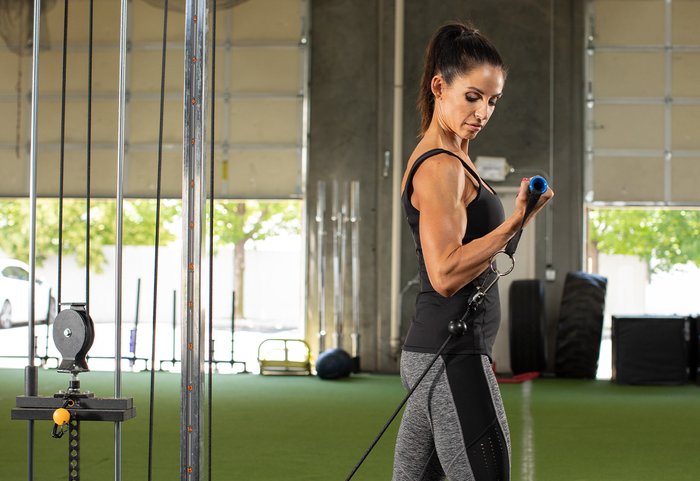
That doesn’t mean they can’t help you better perform come testing day, though. In fact, general exercises offer general transfer into improvements in human performance by increasing muscle hypertrophy, motor-unit recruitment, bone density, and connective tissue strength, which can improve overall health and reduce injury risk.
6. Split Up Your Strength and Conditioning Workouts
Since the ACFT equally challenges your strength, power, and conditioning, splitting up the training into separate strength-focused and power-and-conditioning-focused workouts is a no-brainer.
Here’s how it looks in the first four weeks of Combat Fit:
- 2 strength workouts per week, focusing on 3 ACFT events and accessory work
- 2 power and conditioning workouts per week, focusing on 3 ACFT events and accessory work
Remember: You achieve what you emphasize. Emphasizing certain physical qualities each day makes it easier to focus on learning them and improving your performance on them. This, along with the occasional practice test to tie it all together and give you the ”feeling” of the test, is a time-honored recipe for success.
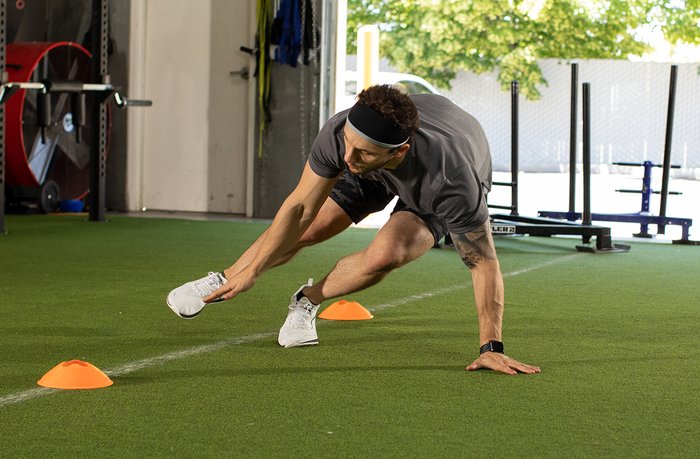
7. Front Load Your Workouts
Look at the workouts in Combat Fit, and you’ll see that exercises specific to the ACFT are placed earliest in all of the workouts—right after a full-body warm-up. This is when you’re freshest, so you can devote the maximum amount of physical and mental energy toward them.
For example, max rep push-ups and trap bar deadlifts are two of the exercises in the ACFT. So, on the two strength days in Phase 1, you’ll do variations of those. When it comes to the push-ups, you’ll even do multiple variations depending on the day.
8. Don’t Do Too Many Practice Tests
It can be incredibly tempting to spend most of your training simply seeing ”where you’re at” with the test—maybe even multiple times a week. This approach has, unfortunately, caused countless people to underperform or straight-up fail at important physical challenges over the years.
During Phase 2, you have two full days of recovery before your weekly practice test. When you’re fresh and recovered, practice tests will not only prepare your body for the specific demands of the ACFT, they will also prepare you mentally. You’ll learn how to pace yourself, how to manage your fatigue, and simply what to expect through the entire ACFT.
This instills confidence because there will be nothing new to you on testing day. It’ll be business as usual. You’ll be ready and you’ll crush it.
